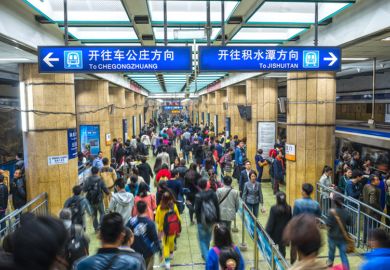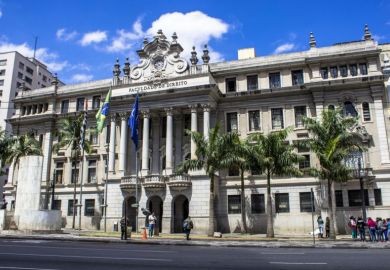Browse the full Emerging Economies University Rankings 2018 results
Realising the urgent need to groom a few universities to compete for global rankings, the Chinese government has not shied away from implementing different incentive schemes, with a concentration of funding support on a select group of institutions.
Most recently, it rolled out a new strategy, called the “Double World-Class Project” (shuang yiliu), targeting an elite group of universities and academic disciplines for investment.
After serious reviews, in September the Ministry of Education published the names of 42 universities it will support to achieve “world-class” status and 95 institutions that have been chosen to develop world-class discipline in areas of strategic importance.
China’s universities have already made progress in international league tables. Overall, 61 Chinese institutions make the top 300 of the 2018 Times Higher Education Emerging Economies Rankings, up from 52 last year.
Search our database of more than 3,000 global university jobs
With funding concentrated on the select few institutions, we have witnessed intensified competition among universities in China, which has inevitably led to stratification.
Institutions have introduced various measures in order to encourage talent from all around the world, including Chinese scholars now based overseas, to join the Chinese campuses to conduct research. Several highly ranked universities on the mainland have used attractive compensation packages as an incentive.
The Chinese returnees have found the labour market increasingly competitive, as a steady stream of international students from China have come home after obtaining overseas university qualifications and gaining some working experience.
Returnees with overseas academic qualifications are, on average, paid three to four times the salary of local graduates, according to recent news reports from mainland China. A separate study conducted in 2015 by New Oriental, a corporation promoting international education in China, estimated that the expected return on investment after studying abroad is 49 per cent for those who spend five years or more abroad, compared with 18 per cent for those who spend three years overseas.
It is therefore not surprising to see growing tensions between locally educated academics and the returnees, or those recruited from overseas.
Mainland China must also recognise that the preferential treatment of certain tiers of universities will inevitably intensify educational inequality.
Download a copy of the Emerging Economies University Rankings 2018 digital supplement
The rankings show that China’s success is still largely limited to a handful of its top universities – just seven Chinese institutions make the top 200 of the latest Times Higher Education World University Rankings.
Will its weaker institutions also make big gains and compete with the best in the world, or will they remain in the lower tiers?
If the Chinese government cannot properly address the widening gap between the “haves” and “have-nots”, particularly the regional variations clearly revealed by the Double World-Class Project, with top university clusters located in Beijing, Shanghai and Nanjing areas, then the stratification process will unquestionably produce different social classes of students.
How would the Chinese government handle the growing regional disparities among universities resulting from the preferential treatment measures? How would the elite universities be sustained with world rankings?
Students at Chinese university campuses have also begun to complain about a perceived decline in the quality of teaching and learning outcomes and that their professors are primarily focused on research and publications, given that institutions now place far more importance on research and knowledge-transfer related activities.
How will the government handle the diversity of student expectations and competing demands when educational inequality is increasingly intensified across higher education institutions? How will it tackle social mobility issues when more graduates join the uncertain labour market? These are the pressing issues confronting the Chinese government in its quest for world-class universities.
Ka Ho Mok is vice-president and Lam Man Tsan chair professor of comparative policy, Lingnan University, Hong Kong.
Watch our video of the 2018 results
POSTSCRIPT:
Print headline: Class conflict
Register to continue
Why register?
- Registration is free and only takes a moment
- Once registered, you can read 3 articles a month
- Sign up for our newsletter
Subscribe
Or subscribe for unlimited access to:
- Unlimited access to news, views, insights & reviews
- Digital editions
- Digital access to THE’s university and college rankings analysis
Already registered or a current subscriber?








